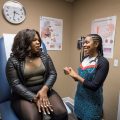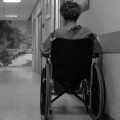
As a relatively new parent, I’m constantly faced with making decisions around complex issues that potentially have long-term consequences. At this moment, since my son is nearing preschool age, my wife and I are deliberating over which elementary school we should send him to in Denver. We know the data around the importance of education and its impacts on long-term life outcomes. What’s less clear to us is which characteristics of that education are most important. Is it more important for our son to have a diverse and strong peer network and mentors at his school, or to be at a school surrounded by students who perform well on standardized tests? Furthermore, recent data suggests that the school itself is less important than the opportunities outside of school that Oliver has available to him.
The data that we have to work with is contradictory, multivariate, and highlights the persistent disparities in education outcomes facing Colorado families. If the system were able to ensure that all students have equal access to a quality education, then our choice wouldn’t be so challenging—but we’ve been grappling with this as a society for decades. This issue of disparities in educational outcomes and access is what can be called a “wicked problem.”
A wicked problem can be defined as “a social or cultural problem that is difficult or impossible to solve, [due to]…incomplete or contradictory knowledge, the number of people and opinions involved, the large economic burden, and the interconnected nature of these problems with other problems.” When trying to solve a wicked problem, there are no concrete guidelines to follow, it’s difficult to measure success, significant compromise between stakeholders is required, and unintended consequences are nearly inevitable.
At CCMU, we work every day to try to solve another wicked problem: health disparities. These are differences in health and health care experienced by one group of people as compared to another: in Colorado, Hispanics and Latinos have higher rates of obesity, veterans have higher rates of suicide, Denver residents are more likely to delay care due to cost, and LGBTQ Coloradans are more likely to be uninsured.
For the past year, we’ve been part of The Colorado Trust’s Health Equity Strategy, which is attempting to solve this wicked problem and achieve health equity in Colorado with new and exciting strategies. The work includes mass education campaigns, partnerships with residents and communities, data and information, and a novel “Field Building” advocacy approach.
This field building strategy is particularly exciting, because it reminds us that we’re not alone in our efforts to solve these wicked problems. Along with the 18 other organizations in this grantee cohort—advocates, direct service providers, and community organizers—we’re working to scale best practices, break down silos, and learn from each other’s approaches and successes. We anticipate building complementary advocacy capacities, robust networks, authentic relationships with affected communities, and innovative models and curriculum, all of which will help ensure that all Coloradans have fair and equal opportunities lead healthy lives.
Last week, Jess wrote about how group projects have become a staple in her work. When it comes to addressing wicked problems like health equity, it’s important to have a group of talented, committed people to work alongside. We hope lessons from this process can help inform the work of other sectors and their work on society’s other wicked problems. I’d like to believe it will also somehow inform my choices for Oliver’s education—perhaps a field building strategy for parenting decisions is in my future!




